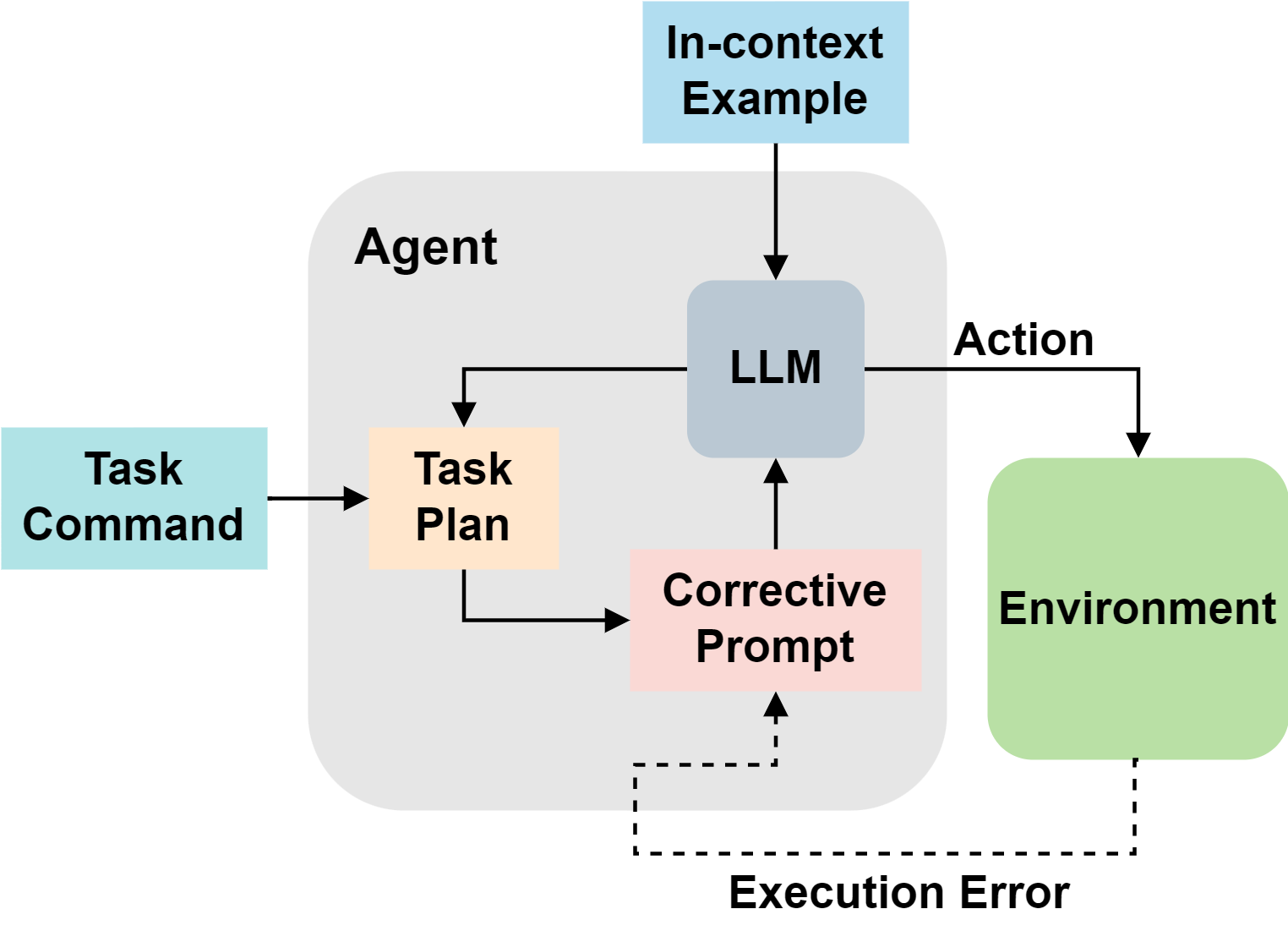
[ICRA-25] Bootstrapping Object-level Planning with Large Language Models
TL;DR – This paper formalizes the concept of object-level planning and discusses how this level of planning naturally integrates with large language models (LLMs).

TL;DR – This paper formalizes the concept of object-level planning and discusses how this level of planning naturally integrates with large language models (LLMs).

TL;DR – In this paper, we introduce CAPE: an approach to correct errors encountered during robot plan execution. We exploit the ability of large language models to generate high-level plans and to reason about causes of errors.
TL;DR – This was a collaboration with Clemson University’s Yunyi Jia and Yi Chen, who were interested in using FOONs for representing assembly tasks. They successfully utilized and adapted a FOON to robotic assembly execution.
TL;DR – In this paper, we introduce the idea of connecting FOONs to robotic task and motion planning. We automatically transform a FOON graph, which exists at the object level (i.e., it is a representation that uses meaningful labels or expressions close to human language), into task planning specifications written in PDDL (not a very intuitive way to communicate about tasks).
TL;DR – In this paper, we attempt to execute task plan sequences extracted from FOONs. Since these sequences may contain actions that are not executable by a robot, we introduce a human assistant in planning, and the robot and assistant work together to solve the task.
TL;DR – In this paper, we explore methods in natural language processing (NLP) – specifically semantic similarity – for expanding or generalizing knowledge contained in a FOON. This alleviates the need for demonstrating and annotating graphs by other means.
TL;DR – This was the very first paper on FOON: the functional object-oriented network. Here, we introduced what they are and how they can be used for task planning. They are advantageous for their flexibility and human interpretability.